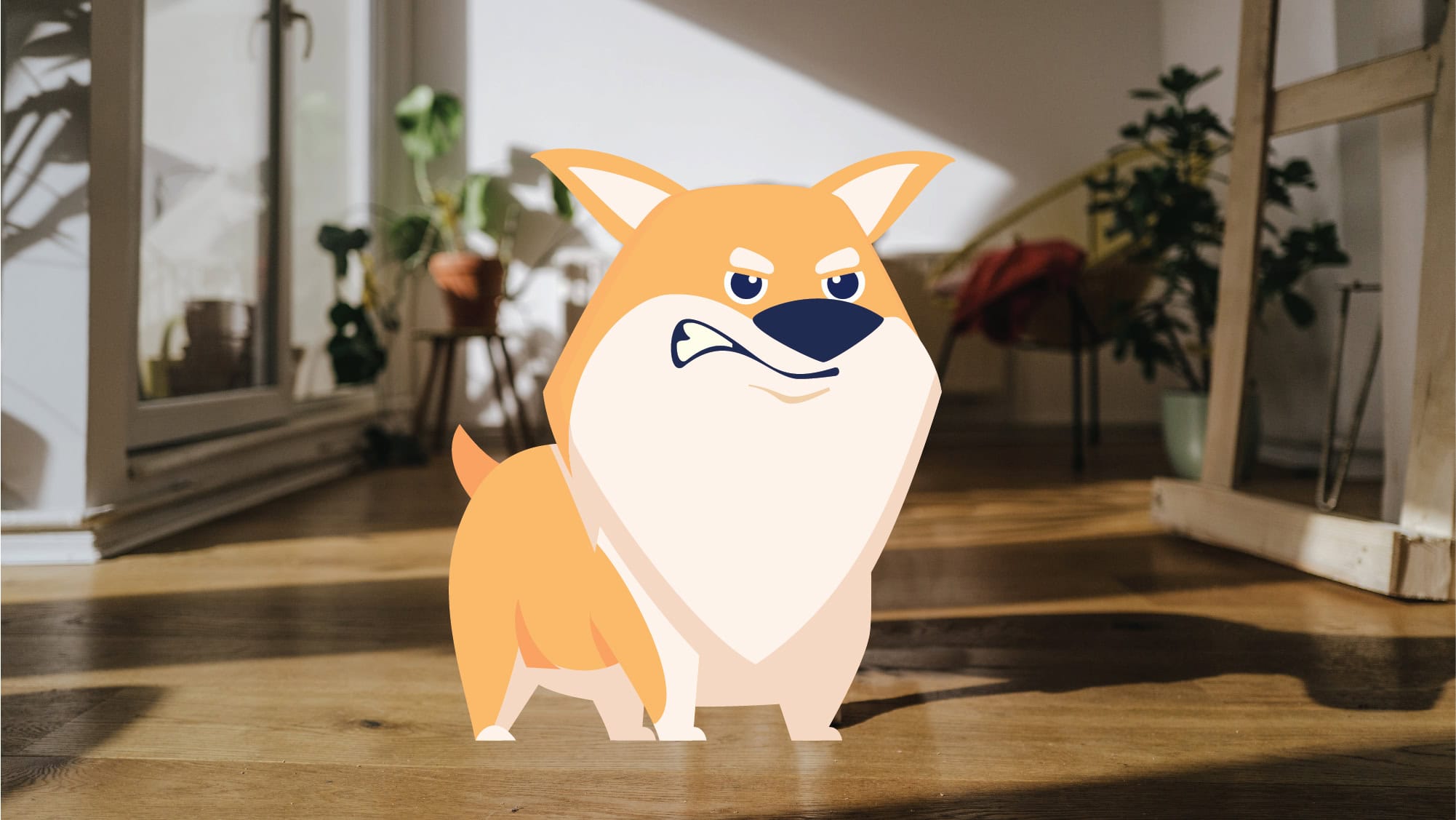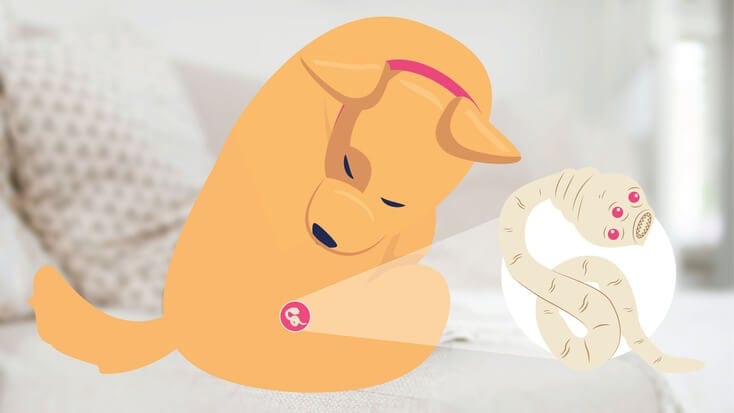Deciding when to say goodbye to a pet is one of the toughest things a pet parent will have to go through. As a veterinarian, one of my jobs is to guide pet parents through this difficult process and together, make the best plan moving forward.
Scheduling a pet Quality-of-Life (QOL) consultation is often a good first step for pet parents who are beginning this journey.
A QOL assessment can help you determine how your pet is functioning, and what measures can be put in place to keep your beloved dog or cat comfortable at home for as long as possible.
This post will help prepare you for making this difficult decision for your pet, and offer all the resources you need to make an informed decision.
The Quality-of-Life Scale for Dogs and Cats
A pet’s health condition can be gauged using something called the Pet Quality-of-Life (QOL) Assessment, which assigns a numerical scale to a pet’s level of physical health, mental health, natural functions, and social functions.
Factors can include things like family interactions, sleep patterns, breathing patterns, mobility, and appetite.
Keep reading: Compassionate Cat Hospice Care: Creating Comfort at Home
QoL Assessment Results
Pets with a score of 30 or higher: Are considered in the normal, healthy range.
Pets with a score between 20 -30: Indicates that a veterinary consultation is recommended to see if medical intervention might be helpful or necessary.

Pets with a score below 20: May be experiencing issues impacting their quality of life and may need a pain management plan, advanced medical treatments, or end-of-life care options.
Signs of Pain in Pets
Since our furry friends can’t talk, recognizing signs of chronic pain is important in determining their long-term plan.
Pets who are experiencing discomfort, disorientation, or a a decline in quality of life may display symptoms such as:
-
Decreased appetite or thirst
-
Lack of interest in normal activities
-
Behavior changes like aggression or hiding
-
Changes in sleep patterns
-
Anxiety
-
Frequent or uncontrolled urination or bowel movements
-
Confusion
-
Vocalizing/whining
The Importance of Veterinary Guidance in End-of-Life Care for Pets
If your pet’s quality of life score is low, your veterinarian will be instrumental in creating an end-of-life care plan for your pet.
This may include palliative care and humane euthanasia. BetterVet’s compassionate veterinarians will support you and your pet during their last stages of life.
When is it Time to Say Goodbye to Your Dog or Cat?
Some of the indicators that the time to consider humane euthanasia has come usually include:
- When your pet’s daily functioning and mobility become severely compromised
- They are in chronic pain or discomfort
- Comfort measures are no longer improving your dog or cat’s quality of life
When you’ve decided that the time to say goodbye to your pet, in-home euthanasia can be a very peaceful process. Our compassionate veterinarians take the time to explain what to expect and are available to support you and your pet every step of the way.
Pets don’t feel pain during the euthanasia procedure, and the process is much like falling into a deep sleep. In-home euthanasia allows you and your other family members to surround your pet during their transition over the rainbow bridge.
How to Say Goodbye to Your Pet
Once you have made the decision that euthanasia is the most humane option for your pet, you can begin planning for the final goodbye.
Choose who would like to be present during the euthanasia process, and make sure all members of the family have a chance to say their goodbyes.
Decide where the euthanasia procedure will take place. In-home euthanasia is a private, calm, and peaceful process that allows you, your family members, and your pet to cherish the last moments together in the comfort of a familiar environment.
Celebrating Your Pet’s Life
Saying goodbye to a cherished pet stirs up deep emotions of grief, which can be long lasting. Honoring your pet’s life in your own personal way may help cope with your feelings of loss.
Some people find comfort in holding a formal or informal ceremony, keeping pet memorial keepsakes, mementos, photos, or choosing a day to celebrate their life every year.
Emotional Support for Pet Parents and Coping with Loss
You may find support and comfort from speaking with others who have experienced losing a pet. Pet parents may find it helpful to participate in pet loss support groups or a forum on sites like Facebook or Reddit.
Parents of children dealing with the loss of a pet can choose how to best communicate the concept of pet loss, but usually it’s best to be up-front that a pet has died. There are children books available that can also help during the grieving process.
Conclusion
Humane pet euthanasia is a difficult but necessary part of pet parenthood. Signs that the time has come to say goodbye include a low QOL Assessment score, indicators of chronic pain, or a significantly diminished level of daily functioning. Some pet parents even say that their pet let them know when the time had come.
Lean on the support of your family, friends, and veterinarian, who can help support you through the process. It’s important to give yourself grace during this time and let yourself come to terms with your loss.
If you think your pet’s health is declining or it might be time to consider humane euthanasia, our veterinarians can help you make the best plan for your pet.
Frequently Asked Questions
What should I expect during the euthanasia process?
Your veterinarian will typically first inject a medication to sedate your pet and prevent them from feeling any pain. They’ll then administer a second injection which will cause your pet to lose consciousness and pass away painlessly and peacefully.
How can I cope with the grief of losing my pet?
You have every right to grieve the loss of your beloved pet deeply. It can be helpful to explore options to celebrate your pet’s life or seek support from friends, family members, or even strangers who are also navigating pet loss.
How do you know when it’s time to put your dog down?
As I mentioned above, a sign you shouldn’t ignore is when your dog appears to be in pain or their quality of life has diminished to the point where they seem anxious, depressed, or in chronic pain.
Cherishing the Bond With Your Pet Until Very End
Making the decision to help your pet cross the rainbow bridge is a heart wrenching but often inevitable part of being a responsible pet parent. BetterVet offers humane, in-home euthanasia, ensuring a peaceful and familiar setting for your pet’s final moments.
Sources:
-
Cary A. Brown, Donna M. Wilson, Eloise Carr, Douglas P. Gross, Maxi Miciak, Jean E. Wallace, Older adults and companion animal death: A survey of bereavement and disenfranchised grief, Human-Animal Interactions, 10.1079/hai.2023.0017, 2023, (2023).
-
Cook, N. and Marchitelli, B. (2023). Factors Contributing to the Decision to Euthanize Pet Dogs and Cats. In Hospice and Palliative Care for Companion Animals (eds A. Shanan, J. Pierce and T. Shearer). https://doi.org/10.1002/9781119808817.ch28





